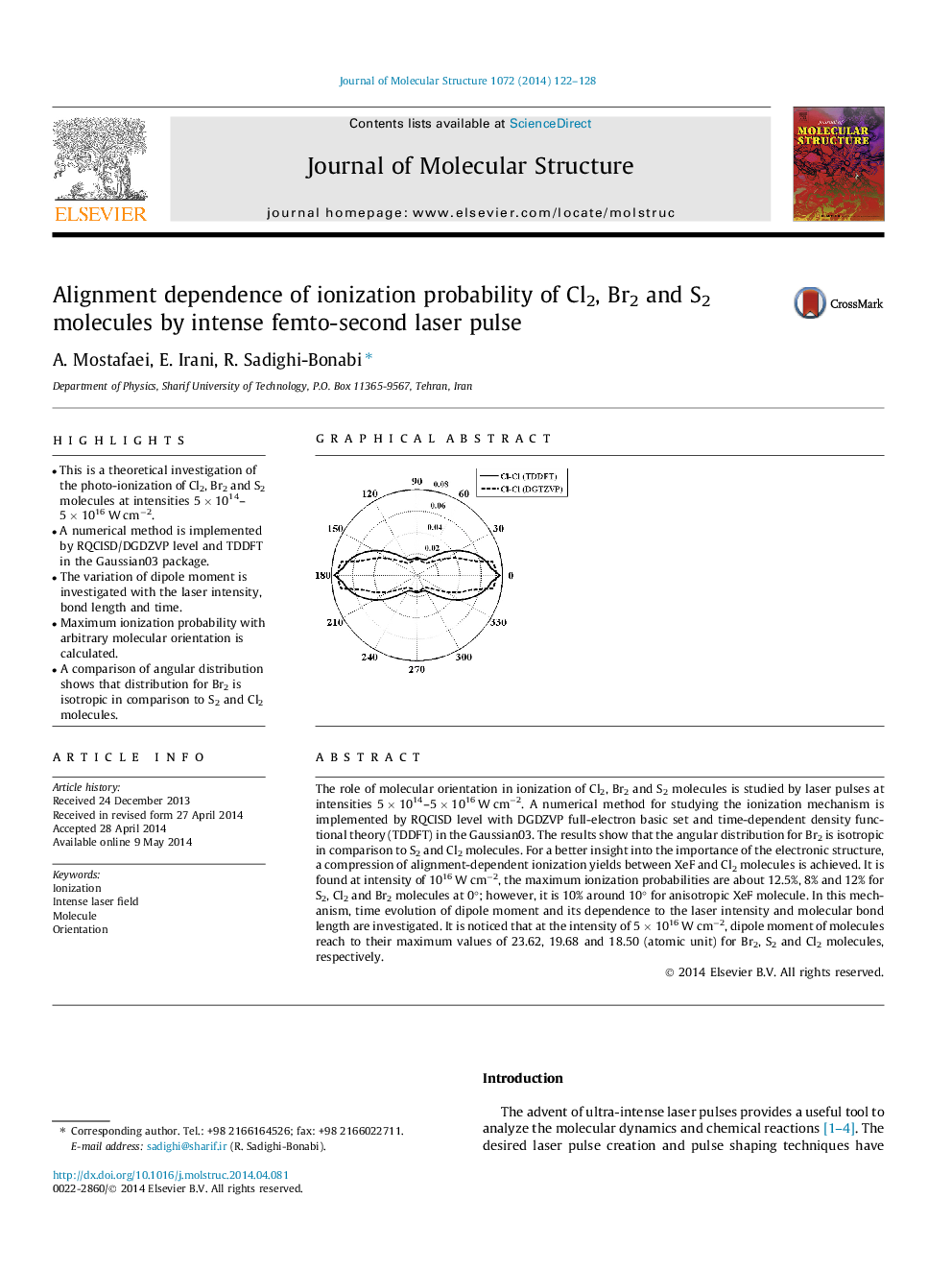| Article ID | Journal | Published Year | Pages | File Type |
|---|---|---|---|---|
| 1405032 | Journal of Molecular Structure | 2014 | 7 Pages |
•This is a theoretical investigation of the photo-ionization of Cl2, Br2 and S2 molecules at intensities 5 × 1014–5 × 1016 W cm−2.•A numerical method is implemented by RQCISD/DGDZVP level and TDDFT in the Gaussian03 package.•The variation of dipole moment is investigated with the laser intensity, bond length and time.•Maximum ionization probability with arbitrary molecular orientation is calculated.•A comparison of angular distribution shows that distribution for Br2 is isotropic in comparison to S2 and Cl2 molecules.
The role of molecular orientation in ionization of Cl2, Br2 and S2 molecules is studied by laser pulses at intensities 5 × 1014–5 × 1016 W cm−2. A numerical method for studying the ionization mechanism is implemented by RQCISD level with DGDZVP full-electron basic set and time-dependent density functional theory (TDDFT) in the Gaussian03. The results show that the angular distribution for Br2 is isotropic in comparison to S2 and Cl2 molecules. For a better insight into the importance of the electronic structure, a compression of alignment-dependent ionization yields between XeF and Cl2 molecules is achieved. It is found at intensity of 1016 W cm−2, the maximum ionization probabilities are about 12.5%, 8% and 12% for S2, Cl2 and Br2 molecules at 0°; however, it is 10% around 10° for anisotropic XeF molecule. In this mechanism, time evolution of dipole moment and its dependence to the laser intensity and molecular bond length are investigated. It is noticed that at the intensity of 5 × 1016 W cm−2, dipole moment of molecules reach to their maximum values of 23.62, 19.68 and 18.50 (atomic unit) for Br2, S2 and Cl2 molecules, respectively.
Graphical abstractFigure optionsDownload full-size imageDownload as PowerPoint slide
